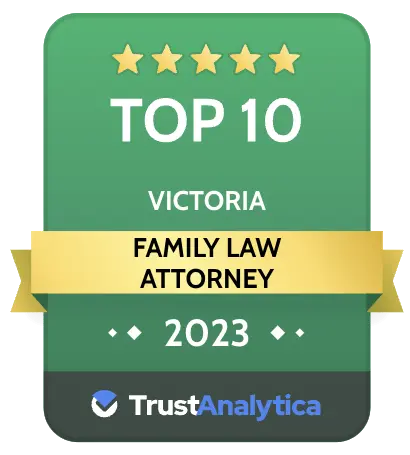Discover more. If your divorce is inevitable, choose the BETTER Path: join our newsletter for supportive, resolution-focused information!
Alternative Dispute Resolution Examples
- Home
- Amicable divorce
- Alternative Dispute Resolution Examples
Considering the alternative dispute resolution examples as illustrated here can help you and your ex navigate through the various agreement options, in order to reach an amicable divorce.
Types of alternative dispute resolution agreements
1️⃣ Reach an agreement by negotiating directly with your ex or soon to be ex-spouse
2️⃣Resolve your matter with negotiation between lawyers
3️⃣Reach an agreement with a four-way meeting
4️⃣Reach an agreement with mediation
5️⃣Reach an agreement or get a final award with mediation-arbitration
6️⃣Reach an agreement with collaborative family law
7️⃣Avoid court via arbitration
8️⃣Reach an agreement with a settlement conference with a judge
Fast & Frugal: Negotiate directly with your ex!
Getting an amicable divorce is much easier when you have an agreeable ex!
Assuming you have had your first appointment with your divorce lawyer and have an understanding of your rights and responsibilities, you might be able to simply sit down with your ex and work out the details of your agreement.
At our law office, we often tell people who want an amicable divorce to use this method. We call it the Fast and Frugal method, and here's how it works....
The two of you will meet with each other at a coffee shop or pub and come back with an agreement written out, sometimes on the back of a napkin. It is fast and frugal although we sometimes also call it the “napkin agreement” and are more than happy for our clients to do this.
For many people, this process works. The “Fast and Frugal Agreement” is one of our favourite alternative dispute resolution examples because it gets our clients to the goal of having their family matter resolved without them having to spend a bunch of money on legal fees.
How to approach the Fast & Frugal Method

Here are the steps:
- Get some initial legal advice in your jurisdiction. If spousal support or child support is in question, obtain calculations as to the funds that will be paid from one of you to the other.
- Consider whether or not you and your ex are amicable enough to resolve your matter directly with one another. If so, give it a try.
- Exchange financial information with your ex if you are unclear about the entire financial and asset picture.
- If you have kids, turn your mind to the different kinds of schedules for parenting time that you will implement.
- If you have kids, think of the decision-making process and your plan if you disagree regarding a significant decision involving your kids.
- Meet with your ex.
- Follow a checklist relating to what goes into a final separation agreement. You want to make sure you cover everything.
- If you agree, write it down.
- Bring what you wrote down to a lawyer to draft the final separation agreement. We recommend you get a lawyer to draft the agreement for you. This is not the time to save a few bucks, it is the time to rely on an expert if you can afford it.
- Ensure that when the agreement is drafted, each of you obtains independent legal advice and a “certificate of independent legal advice” is filled out (this makes your agreement virtually impossible to set aside).
Of course, you will each want to get independent legal advice and have a lawyer draft the final document, but the Fast & Frugal process can save you a ton of time and resources.
Might be a good fit for you if:
- You are relatively amicable
- You are not afraid of or intimidated by your ex (there was no family violence in your relationship or a huge imbalance of power)
- You are not concerned about your ex hiding funds or resources. You trust that they are upfront about things and you have a pretty good idea of their finances.
- Your ex is someone that tends to deal with people fairly.
Will most likely NOT be a good idea if:
- You have not met with a lawyer to get legal advice (and numbers) specific to your situation.
- Your ex has a history of bullying you and others (they will likely use this meeting as an opportunity to bully you further and try to get their way).
- There has been a history of family violence.
- Your ex is self-employed, does a lot of work for cash “under the table” and you do not trust they will be honest or forthright about their finances.
- Your ex has often bragged about how they have taken advantage of others or cheated them (if they think taking advantage of others is okay, why would they not do that with you?
Alternative dispute resolution examples
Utilizing negotiation between lawyers
Depending on who you hire as your lawyer, they can assist you to get a final agreement by negotiating with the other lawyer. This is one of the alternative dispute resolution examples that can work really well. Your lawyers may negotiate by writing letters and emails, having telephone discussions or discussing matters over video conferencing.
This process can work well and save you significant resources and can be very cost-effective if it goes smoothly. However, if lawyers write back and forth too often, the costs can escalate without your matter progressing. If it ends up with a letter back-and-forth writing campaign between lawyers,then it is much better to move forward with an adr alternative dispute resolution process that includes you and your lawyers communicating directly.
Might be a good fit for you if:
- Your lawyer completely understands your case and is well-prepared for the negotiation
- You understand your ex-spouse’s financial circumstances fully or have exchanged necessary financial information.
- You are not concerned about your ex hiding funds or resources.
- Your lawyer has dispute resolution training and has a track record of resolving matters rather than repeatedly taking their clients’ cases through the court system.
- You and your lawyer have discussed the concern that if there ends up being too many letters or emails being written back and forth without progress and conclusion, you will move on to a different process to see your matter resolved.
Will most likely NOT be a good idea for you if:
- You have concerns that your lawyer does not fully understand your matter or what is important to you.
- You have not met with your lawyer to prepare for the negotiation and they are not fully familiar with what would be a good result for you and your changing family.
- Your lawyer does not understand your financial circumstances, including assets, income, and liabilities.
- Your lawyer does not have significant dispute resolution training or does not specialize in family law.
If you plan to instruct your lawyer to negotiate directly here are the steps:
- Choose your divorce lawyer and make sure you choose the best alternative dispute resolution lawyer to act for you in your alternative forms of dispute resolution.
- If support is in question, ensure your lawyer has done the calculations.
- Exchange financial information with your ex if you are unclear about the entire financial and asset picture.
- If you have kids, discuss with your lawyer what you hope for regarding your parenting plan. Ask your lawyer to provide you with different kinds of child custody schedules for parenting time and discuss which ones you would like to implement.
- If you have kids, discuss with your lawyer the various options available for you and your ex to make significant decisions regarding your kids, and what plan you have if the two of you disagree regarding a significant decision about your kids.
- Ensure that you and your lawyer have a roughly sketched-out plan for an acceptable settlement for you.
- Discuss with your lawyer other available options to resolve your matter should the negotiation not result in a final resolution.
- Find out from your lawyer when they and your ex’s lawyer are scheduling a meeting and schedule a meeting with your lawyer to be held shortly thereafter so you are kept in the loop and your matter does not languish
Reach an agreement with a 4-way meeting

If one of the above alternative dispute resolution examples is not for you, might consider instructing your lawyer to have a 4-way meeting. A 4-way meeting can be a very cost-effective and time-efficient way of agreeing.
This is an adr dispute resolution process whereby you, your lawyer, your ex-spouse, and their lawyer sit down together (either in person or via video conferencing) and work out the terms of an agreement.
You first prepare by exchanging financial and other information. You also walk into this meeting with some initial legal advice. Then you “roll up your sleeves” and try to work out a final and legally binding separation agreement. If the lawyer on the other side is cooperative and has mediation-based training along with a dispute resolution focus, this can be a great way to resolve your matter. Four-way meetings tend to be quicker, better, and cheaper than court.
If the 4-way meeting does not work or is not suitable, there are other forms of dispute resolution you can consider like the ones below.
Regardless of which of the alternative dispute resolution examples you will engage in to see your matter resolved, preparation is key. Don’t forget, as with all other processes, to ensure you get some initial independent legal advice from a lawyer in your jurisdiction before starting this process.
Reach an agreement with mediation
Compared to other alternative dispute resolution examples, mediation is probably the process that results in a final agreement most often. In mediation, you can mediate with or without lawyers present. In our experience, mediation is best when lawyers are present to finalize the deal. The point we make is this, mediation is almost always worth it.
In most cases with mediation, all four people, that is, lawyers and their clients, attend mediation using the services of a trained family law mediator. The trained family dispute resolution practitioner is the 5th person in the room.
The mediator works with everyone to reach a final, binding alternative dispute resolution agreement. The mediator has one job: to get you to an agreement. If you disagree, the mediator is not authorized to decide for you. The lawyers provide you with legal advice and guidance throughout the process.
You can then use that binding agreement as part of the documentation to support your desk order divorce.
Mediation is much less expensive than court and tends to take less time because you do not have to wait for scheduled court time.
The only downside is that if you disagree, you do not have a concluded matter. This means that you are back to the drawing board in some ways, in that you might have to go to court or arbitration to see the matter finalized.
If your mediation fails, do not despair, you do not have to give up. You can return to other forms of dispute resolution perhaps with a lawyer’s assistance.
Important Related Pages
Reach an agreement with mediation/arbitration (med/arb, for short)
Mediation/arbitration is a lot like mediation except that if you do not settle at the mediation stage, you move to arbitration. You enter into the med/arb agreement before the process starts. This means that if you disagree on final terms, the mediator will take off their mediation hat and put on their “judge” hat and make the decision for you. As with mediation, mediation/arbitration is one of the most effective alternative dispute resolution examples
Alternative dispute resolution arbitration is when you give the med/arbiter the authority to finalize your matter and make a binding decision if you do not enter a final agreement at the mediation stage. Your mediator removes their “neutral” hat and is authorized to make a legally binding decision to finalize matters. Essentially, they will become your private judge.
Like mediation, med/arb is less expensive than court and takes less time to get to a final binding agreement than court. This type of alternative dispute resolution process leaves much of the decision-making up to you and your ex-spouse and gives you a final resolution.
Reach an agreement with collaborative family law
Family matters do not HAVE to be complicated.
If you and your spouse are separating or thinking about separating, you may seek a way to resolve your issues and come to an agreement outside of court.
You may want to consider the collaborative family law process if this is the case.
What is collaborative law?
Collaborative Law is a process that addresses the emotional, financial and legal issues that arise as you transition through the end of a relationship.
The heart of collaborative practice or collaborative divorce is to offer you and your spouse or partner the support, protection, and guidance of your own lawyers but to resolve disputes respectfully and without going to court.
In collaborative practice, there are three core elements:
- Negotiate a mutually acceptable settlement without having courts decide on issues.
- Maintain open and transparent communication.
- Create shared solutions acknowledging the highest priorities - more often than not, an individual’s highest priority is to move forward into the next chapter of their life, repairing what can be repaired and causing little or minimal damage to themselves or their children.
As we mentioned, legal issues are only one aspect of the challenges that arise when individuals are separating or divorcing.
The collaborative divorce process allows you to work with other trained professionals to support you in various ways.
These professionals can include financial specialists, divorce coaches, and child specialists who can all work together as a team to benefit all parties.
And you might think, wow, there are many moving parts here and it sounds complicated or expensive. However, in our experience, having the appropriate support at the outset allows people the best opportunity to play an active role in decision-making that will affect them for a long time to come and greatly reduces the likelihood of conflict and litigation in the future which can certainly come at a great expense.
Alternative dispute resolution - reach an agreement with a settlement conference with a judge
Maybe you want an amicable divorce, but legal action has already been started.
Here is the great news:
Even if a legal action has been started, it does not mean you will necessarily end up in trial.
There are many steps between the start of a legal action and appearing before a judge in a contested trial.
This means many opportunities exist to resolve your matter instead of going to court. Also, because it saves on court time, in most jurisdictions, the courts offer a settlement conference option where the parties and their lawyers can meet with a judge on a “without prejudice” basis.
A judge will meet with the parties and their lawyers and guide them in a discussion and hopefully get them to agree to a settlement. Here you discuss settlement options with the judge present. This can be very useful because having a judge look at your matter and give their view as to what they would theoretically order in the circumstances relating to your case, can be very helpful to get the parties to agree. If the parties agree, then the settlement agreement becomes a binding court order. In most jurisdictions settlement conferences with a judge can last from a couple of hours up to a day or two.
If a court action has started in your matter, ask your lawyer about this as an option to see your matter resolved. It can be a cost-effective and efficient way to finalize all the decisions you have to make and get to a clear agreement.
Summary of alternative dispute resolution examples
Discussing the various alternative dispute resolution examples with your lawyer will open up the opportunity for a friendly divorce process. However, it is important to remember that even if you and your ex-spouse are not entirely amicable or really dislike one another, all is not lost. Even high-conflict matters can be resolved this way.









